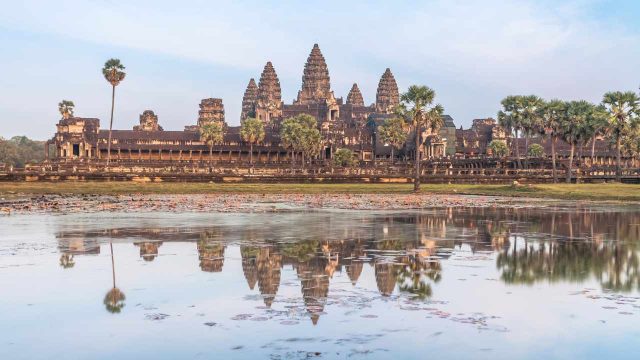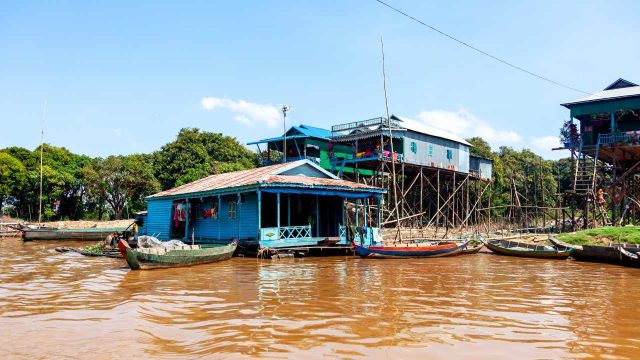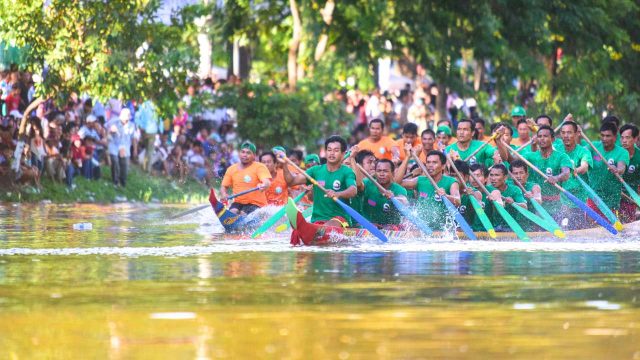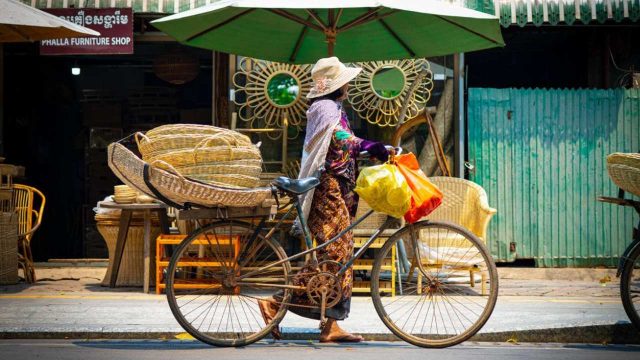Cambodia Travel Information – The Enchanting Mysteries Of Cambodia: The Ultimate Travel Handbook
Have you dreamed of seeing ancient temples in lush jungles? Or diving into a culture that mixes old and new? Cambodia is full of these wonders. My journey there showed me a world of magic through a travel guide.
In Phnom Penh, I was hit with sights and smells. The streets buzzed with food smells and pagoda bells. It was the start of an amazing trip. I found many attractions that amazed me.
At Angkor Archaeological Park, I saw over 1,000 temples. Angkor Wat’s towers and bas-reliefs took me back in time. The Bayon and Ta Prohm temples were full of mystery.
Cambodia is more than old temples. In Siem Reap, the nightlife and Night Market were alive. The people’s smiles and help made me feel welcome, even with language differences.
Looking back, I want to share tips for your trip. This guide will help you enjoy Cambodia’s wonders. From Phnom Penh’s tuk-tuks to great food, it’s your guide.
Key Takeaways
- Cambodia offers a perfect blend of ancient wonders and modern experiences
- Angkor Archaeological Park houses over 1,000 temples across 400 square kilometers
- Cambodian people are known for their warmth and multilingual abilities
- Siem Reap’s Night Market is a must-visit for vibrant shopping experiences
- Phnom Penh and Siem Reap are popular routes for most travelers
- Historical sites like the Royal Palace and Tuol Sleng Genocide Museum offer deep insights into Cambodian history
Editor’s Note: Get ready for an awesome trip to Cambodia! This guide is packed with cool info about old temples, yummy food, and fun things to do. You’ll learn about the best times to visit and how to get around. From the big city of Phnom Penh to the amazing Angkor Wat, we’ve got you covered. Pack your bags and let’s go explore Cambodia!
Discovering the Kingdom of Wonder: An Introduction to Cambodia
Cambodia is a place of amazing contrasts. It has ancient wonders and modern life. When I arrived, I saw history and today’s world mixed together.
The allure of ancient temples and modern cities
Cambodia takes you back in time. It has many temples, like Angkor Wat, a true marvel. This temple is a symbol of South Asia’s greatest times.
But, Phnom Penh’s busy streets show Cambodia’s growth. It’s a city that’s always moving.
A brief history of Cambodia’s cultural heritage
Cambodia’s culture is very deep. It has a long history, from the Khmer Empire to the Khmer Rouge. The Royal Palace in Phnom Penh shows the French influence.
Today, Cambodia is young and moving forward. Yet, it still values its traditions.
Why Cambodia should be on your travel bucket list
Cambodia is a unique place to visit. You can see history and learn about local ways. The country’s provinces offer different sights and experiences.
Try Amok curry or visit the Choeung Ek Killing Fields. Cambodia will touch your heart in ways you can’t imagine.
| Attraction | Location | Significance |
|---|---|---|
| Angkor Wat | Siem Reap | Largest religious monument in the world |
| Royal Palace | Phnom Penh | Official residence of the King of Cambodia |
| Tuol Sleng Genocide Museum | Phnom Penh | Former Khmer Rouge prison, now a memorial |
| Tonle Sap Lake | Central Cambodia | Largest freshwater lake in Southeast Asia |
Essential Cambodia Travel Information
I’m excited to share some crucial tips for your Cambodian adventure! First, let’s talk about cambodia currency. The official cambodian riel is used alongside the US dollar. During my travels, I found that $1 equals about 4000 riel. Most places accept both currencies, but it’s handy to have some riel for small purchases.
Safety is paramount when exploring this beautiful country. I always recommend getting cambodia travel insurance. It’s a small investment that can save you from big headaches. The country has a moderate crime rate, so stay vigilant, especially in tourist areas.
Here’s a quick rundown of essential travel info:
- Best time to visit: November to March
- Languages: Khmer and English
- Emergency number: 119
- Visa: eVisa available for 30-day stays
When it comes to health, get vaccinated against hepatitis A, tetanus, and diphtheria before your trip. Medical care costs vary, but expect to pay $20-$50 for a consultation, including medication.
| Item | Cost (USD) |
|---|---|
| Tuk-tuk ride | $3 |
| SIM card with 1.5GB data | $5 |
| Bargaining discount (items under $10) | ~33% |
Remember, while exploring rural areas, be cautious of unexploded ordnance. Stick to marked paths and avoid touching suspicious objects. With these tips in mind, you’re all set for an unforgettable Cambodian journey!
Planning Your Cambodian Adventure: Best Time to Visit and Visa Requirements
I’m excited to share my insights on planning your trip to Cambodia. The best time to visit Cambodia depends on your preferences for weather and crowds. Let’s dive into the details to help you make the most of your adventure.
Seasonal Considerations for Optimal Travel Experiences
Cambodia has two main seasons: dry and rainy. The dry season, from November to April, is split into cool (November-February) and hot (March-April) periods. Temperatures average 28°C (82°F) during this time. The rainy season runs from May to October, with moderate temperatures of 27°C (81°F).
| Season | Months | Average Temperature | Conditions |
|---|---|---|---|
| Cool Dry | November – February | 25°C – 30°C (77°F – 86°F) | Pleasant, low humidity |
| Hot Dry | March – April | Up to 40°C (104°F) | Very hot, dusty |
| Early Rainy | May – July | 25°C – 35°C (77°F – 95°F) | Moderate humidity, short rains |
| Late Rainy | August – October | 24°C – 32°C (75°F – 90°F) | High humidity, heavy rains |
Navigating Cambodia’s Visa Application Process
Understanding cambodia visa requirements is crucial for a smooth entry. Most travelers can obtain a visa on arrival or apply for an e-visa online. The process is straightforward, with options for tourist and business visas. I recommend checking the official Cambodian government website for the most up-to-date information.
Entry Restrictions and Vaccination Requirements
Cambodia entry restrictions and cambodia vaccination requirements may change, so it’s essential to verify the latest information before your trip. Currently, travelers should be prepared to show proof of COVID-19 vaccination and may need to undergo health screenings upon arrival. It’s always wise to consult with your doctor about recommended vaccinations for travel to Southeast Asia.
Exploring Cambodia’s Iconic Destinations
Cambodia is a treasure trove of history and beauty. It welcomes travelers from everywhere. With its rich past and modern sights, Cambodia is a must-see.
The country has 16 million people and is warm all year. It offers experiences you won’t forget.
Unveiling the mysteries of Angkor Wat
My adventure started with Angkor Wat tours. It’s the biggest religious site in the world. Every year, nearly two million people visit.
It covers 3000 square kilometers. Over a hundred ancient sites tell Cambodia’s story. The flag shows Angkor Wat, making it special.
Discovering the charm of Siem Reap
Siem Reap is more than temples. It’s a lively city near Angkor. I loved trying local foods like amok and nom banh chok.
Siem Reap’s airport makes it easy to get to. It’s perfect for those wanting to see Angkor Archaeological Park.
Experiencing the vibrant capital, Phnom Penh
Phnom Penh is a city of contrasts. It’s full of history and modern life. I saw the Royal Palace, National Museum, and Tuol Sleng Genocide Museum.
The city mixes Khmer and French styles. Its airport and buses make it a great place to start exploring Cambodia.
Immersing in Cambodian Culture and Customs
I love exploring Cambodian culture and local customs. The Kingdom of Wonder offers a rich tapestry of traditions that date back centuries. As I wander through this enchanting land, I’m struck by the warmth and hospitality of the Khmer people.
Respecting local customs is key when visiting Cambodia. I always dress modestly when entering temples and remove my shoes before stepping into homes or religious sites. These simple acts show reverence for Cambodian culture and earn smiles from locals.
Cambodia’s artistic heritage is truly captivating. I’ve had the privilege of watching traditional dance performances that tell ancient stories through graceful movements. The Apsara Arts Foundation in Phnom Penh offers free classes to at-risk youth, preserving this beautiful art form.
| Cultural Experience | Description |
|---|---|
| Angkor Wat Temple Complex | World’s largest religious monument, dream destination for history buffs |
| Khmer Cooking Class | Learn to prepare authentic dishes at Sojourn Boutique Villas in Siem Reap |
| Buddhist Temples | Experience the spiritual side of Cambodia, where 95% follow Theravada Buddhism |
| Social Enterprises | Support local initiatives that preserve cultural heritage and help disadvantaged groups |
Embracing Cambodia local customs has enriched my travels immensely. From savoring street food to participating in vibrant festivals, every experience deepens my connection to this fascinating country. I encourage fellow travelers to approach Cambodian culture with an open heart and mind.
Navigating Transportation and Accommodation Options
I’ve found many ways to travel in Cambodia. You can take fun tuk-tuk rides or fly to different places. There’s something for everyone.
Getting around Cambodia: Tuk-tuks, buses, and flights
Tuk-tuks are great for short trips. They cost $1-2 and are lots of fun. For longer trips, try express minivans or share taxis.
Domestic flights are also an option. They connect big cities like Phnom Penh and Siem Reap. This makes traveling long distances easy.
Where to stay: From luxury resorts to backpacker hostels
Cambodia has places for every budget. Hostels for about $45 a day offer meals and transport. Mid-range places cost around $90 daily.
Luxury resorts are available for about $240 a day. They offer top-notch experiences.
Tips for safe and comfortable travel within the country
Staying safe is important in Cambodia. Use trusted transport and be careful in crowded places. Apps like Grab and PassApp help book rides safely.
Remember, U.S. dollars are widely accepted. This makes shopping easier for tourists.
| Travel Mode | Cost | Best For |
|---|---|---|
| Tuk-tuk | $1-2 per ride | Short city trips |
| Motorcycle rental | $4-6 per day | Exploring rural areas |
| Car with driver | $40-50 per day | Guided tours |
| Domestic flights | Varies | Long-distance travel |
Savoring Cambodian Cuisine: A Gastronomic Journey
I’m exploring the rich flavors of Cambodian cuisine. It’s a mix of Khmer traditions, French touches, and Asian cooking. The markets are alive with fresh food and spices.
In Phnom Penh, I found something interesting. French restaurants are more common than Khmer ones. This is because of the French colonial past. But, dishes like fish amok and lok lak are still loved by locals.
A typical Cambodian meal has:
- Fried or steamed rice
- Fish seasoned with fresh chilies or garlic
- A side of spicy or sour soup
Insects are a big deal in Cambodian food. Crickets and locusts are tasty and full of protein.
| Dish | Description |
|---|---|
| Amok chouk | Steamed curry in banana leaves |
| Samlor machu trey | Sour fish soup |
| Char kroeung sach ko | Stir-fried beef with lemongrass |
| Nom banh chok | Khmer noodles with fish curry |
Want to learn more? Cooking classes let you make these dishes yourself. It’s a great way to enjoy Cambodian food at home.
Off the Beaten Path: Unique Experiences in Cambodia
Cambodia has many special experiences for brave travelers. I found cool places that show the country’s beauty and culture. You can see floating villages and hidden temples on backpacking trips.
Exploring Floating Villages on Tonle Sap Lake
My trip to Tonle Sap Lake was amazing. I saw villages floating on the water. It’s a unique way of life that’s both old and flexible. The lake is also full of wildlife, great for nature fans.
Discovering Hidden Temples and Lesser-Known Ruins
Angkor Wat is famous, but I found Banteay Chhmar just as interesting. It’s a peaceful spot away from busy places. Prasat Preah Khan and Sambor Prei Kuk in Kampong Thom are also cool temples to see.
Engaging in Eco-Tourism and Community-Based Initiatives
Eco-tourism in Cambodia is growing, and I tried it in Kirirom National Park. The park has trails, lakes, and green hotels. In Mondulkiri, I helped local artists and learned about their crafts.
| Destination | Unique Experience | Travel Time from Phnom Penh |
|---|---|---|
| Kratie | Irrawaddy dolphin watching | 4 hours |
| Koh Rong Samloem | Pristine beaches | 1.5-hour ferry from Sihanoukville |
| Battambang | Street art and cultural scene | 3 hours from Siem Reap |
These unique experiences showed me Cambodia’s hidden side. Whether you like backpacking or luxury stays, there’s something special here for you.
Thinking back on my trip to Cambodia, I’m amazed by all it has to offer.
You can see the huge Angkor Wat or relax on Sihanoukville’s beaches. It’s a place for everyone.
Planning your trip, remember to spend at least three days at Angkor Wat. It’s huge and amazing, but you’ll want more time.
Cambodia has 25 provinces and is 181,035 square kilometers big. Siem Reap is lively, and Phnom Penh is great for food. There are places to stay for every budget.
When choosing a holiday package, don’t forget to pack right and get travel insurance. Cambodia’s history and people make your trip special. It’s a mix of old and new that’s truly amazing.




